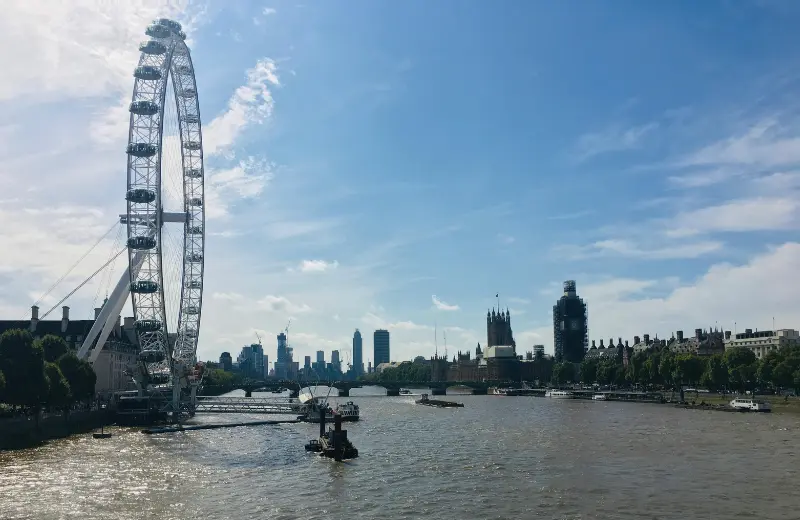In the heart of South Kensington, behind its magnificent Romanesque façade, stands one of London’s greatest treasures, the Natural History Museum. It’s more than just a museum; it’s a portal into Earth’s story, spanning billions of years of life, evolution, and discovery. Whether you’re a family on holiday, a student exploring science, or a traveller in search of inspiration, this iconic institution offers a truly unforgettable experience.
The Natural History Museum is not only a scientific institution but also a cultural icon. With more than 80 million specimens under its roof, from the giant dinosaur bones to the dazzling gemstones, it is the culmination of human curiosity and awe. Strolling through its corridors is akin to entering an alive history book where science and storytelling come face-to-face.
A Glimpse into History
The history of the Natural History Museum started in 1881, when it opened for the very first time to the public. Conceived by architect Alfred Waterhouse, the building itself is a piece of art constructed in a bold Romanesque fashion, with complex terracotta ornamentations that represent plants, animals, and fossils. Each pillar and each arch tells a story of discovery and dedication to nature.
Initially housed in the British Museum, the Natural History Museum soon was established as an independent institution focused on life and Earth sciences. During the subsequent century, it grew from a Victorian curiosity collection to become a globally acclaimed research and education centre. It continues to break new ground in areas such as climate change, biodiversity, and planetary science.
Its majestic entry, Hintze Hall, is humbling too. Formerly occupied by the iconic Diplodocus skeleton “Dippy”, it is now host to a breathtaking 25-metre-long blue whale skeleton called “Hope”, hanging from the ceiling, an emblem of life, strength, and the delicate beauty of our world.
What to Expect Inside
The museum is split into colour-coded zones that are simple and fun to explore:
- Blue Zone: It is all about dinosaurs, mammals, and the richness of life.
- Green Zone: This is where evolution, ecology, and the natural resources of the Earth are explored.
- Red Zone: Enters geology, volcanoes, and forces that shape our world.
- Orange Zone: Features the Darwin Centre, where scientists carry out continuous research.
Kids adore the hands-on displays, ranging from the bellowing animatronic T. rex to touch fossil digs. Themed trails can be followed by families, and students frequently attend workshops and learning sessions. Temporary exhibitions such as Wildlife Photographer of the Year provide an extra thrill with each visit.
The museum is not merely an exhibition; it’s an interactive journey. You get to touch a genuine meteorite, experience the shake of an earthquake simulator, and dig deep into digital archives displaying DNA studies. Each corridor beckons to be explored and ignites the imagination.
Must-See Highlights
When you’re short on time, ensure you include these must-see highlights:
1. Hintze Hall:
“Hope” the Blue Whale
Dangling majestically above the great hall, Hope is a stunning representation of life on our planet and our responsibility to preserve it. The architecture of the hall, complete with cathedral-esque arches and ambient light, is a stunning welcome to the museum.
2. The Dinosaur Gallery
A popular favourite with tourists, this hall is home to one of the world’s most extensive dinosaur fossil collections. The T. rex animatronic is a showstopper, roaring, walking, and entertaining kids and adults in equal measure.
3. Human Evolution Gallery
Follow the captivating history of mankind, from ancient ancestors to contemporary civilisation. On display are ancient skulls, timelines to interact with, and reconstructions that enable you to visualise mankind’s collective origins.
4. Mineral and Gem Hall
Step into a dazzling realm of crystals, gems, and meteorites. Don’t forget the Aurora Pyramid of Hope, featuring spectacular and brightly coloured diamonds, and the enormous Namibian iron meteorite.
5. Wildlife Photographer of the Year
This annual photolab exhibition features stunning images of wildlife and the natural world from across the world, an emotive reminder of the planet’s delicate beauty.
Visitor Experience
The Natural History Museum provides an outstanding visitor experience for all, from toddlers with families to serious researchers.
You are welcome to explore independently with free maps and digital guides, or accompany one of our expert-led tours, which unlock hidden facts and behind-the-scenes stories.
Services and facilities include:
- Baby-changing and feeding rooms
- Cloakrooms and lockers
- Wheelchair accessibility and step-free access
Free Wi-Fi throughout the museum
There are multiple cafés and food outlets serving everything from hot meals to quick snacks. The T. rex Grill is a family favourite, while the Central Café offers relaxing views of Hintze Hall. The museum shop sells unique souvenirs, science kits, and eco-friendly gifts inspired by the natural world.
How Do You Get to the Natural History Museum
It is situated in South Kensington, a London suburb that’s as cultural as it gets, together with the Science Museum and the Victoria and Albert Museum.
By Underground (Tube)
The nearest tube to the Natural History Museum is the South Kensington Station, only a 5-minute walk away via a covered walkway.
Alternatively, you can use Gloucester Road Station, which is around a 10-minute walk from the museum.
Both stations have access to the District, Circle, and Piccadilly Lines for simple connections from any part of central London.
By Bus
A number of buses stop near the museum, such as routes 14, 49, 70, 74, 345, 360, and C1. The routes link the museum to major areas like Kensington, Knightsbridge, Chelsea, and central London.
By Car
Parking on Exhibition Road and Cromwell Road is very restricted. The museum asks people to use public transport, but if they do drive, nearby public car parks like Union Car Park (Kensington) are good options.
By Taxi or Private Transfer
For families, older visitors, or those with luggage, a taxi is an easy option for arriving at the museum.
Airport to Museum Travel Times:
Average journey times for London Airport Transfers range from 30 to 90 minutes depending on the airport and traffic conditions, making it easy to plan your visit.
- Heathrow to South Kensington: 45–60 minutes
- Gatwick Airport transfer to London: 1 hour 30 minutes
- Stansted Airport Taxi to London: 1 hour 40 minutes
- Luton Airport Taxi to London: 1 hour 15 minutes
Recommended Service: My London Transfer is a quick, pre-booked taxi service with fixed fares, clean cars, and direct drop-off at the museum entrance.
By Train
If traveling to London by train, the closest mainline stations are Victoria, Paddington, and Waterloo, all within a short taxi or tube ride of South Kensington.
Planning Your Visit
Opening Hours: Every day, 10:00 AM – 5:30 PM (final entry 5:00 PM)
Tickets: Entry is free for general admission, though some special exhibitions might be ticketed at a cost (book online for reductions).
Best Times to Visit: Early morning, weekdays, or later afternoon are less crowded.
Recommended Duration: 2–3 hours for highlights, or a whole day to explore in depth.
Safety: Bag checks are conducted at entrances; no large suitcases.
Travel Tips for Tourists
Take a camera, photography is permitted (except for some temporary exhibitions).
- Walk in comfortable shoes; the museum is huge and there’s a lot of walking involved.
- Bring a bottle of water and some light snacks, or have lunch at the café.
- Kids can join the Explorer Backpacks programme for interactive learning resources.
- Pair your visit with other local attractions such as Hyde Park, Kensington Gardens, or the Science Museum; they’re all within walking distance.
Hidden Gems & Off-the-Beaten-Path Spots
In addition to the renowned dinosaur bones, there’s also a less frenetic, more personal aspect to the museum:
- The Darwin Centre: A state-of-the-art research centre where scientists conduct research into biodiversity and genetics. Visitors can glance behind the glass to see live research underway.
- Spirit Collection: Where millions of preserved specimens, including Charles Darwin’s own collections, are kept. Access is available through special tours.
- Hintze Hall Balcony: Provides one of the greatest photo opportunities, looking down on Hope the whale from above.
- Gardens and Cafes: The side garden and café of the museum are serene places to relax off the tourist beat.
Cultural & Educational Significance
The Natural History Museum is more than a display of fossil bones; it’s an active research centre informing our knowledge of the world. Its researchers tackle key world problems, including climate change, extinction, and sustainability.
School programs and outreach efforts encourage young minds to delve into science, and collaborations with universities globally make it a center for innovation. Through such exhibitions as Our Broken Planet, the museum reminds people of the responsibility of humans to preserve the Earth for generations to come.
Final Thoughts
The Natural History Museum in London is more than somewhere to go, it’s somewhere to be. It embodies the magic of nature, the genius of science, and the elegance of discovery in one unforgettable experience.
From the moment you stand under the blue whale in Hintze Hall to the moment you exit with a new appreciation for the world, you’ll see why this museum is one of London’s most popular attractions.
So the next time you’re in the capital, spend a few hours or a whole day discovering this temple of nature because each and every fossil, crystal, and photo within the Natural History Museum has a tale to tell the tale of us all.




